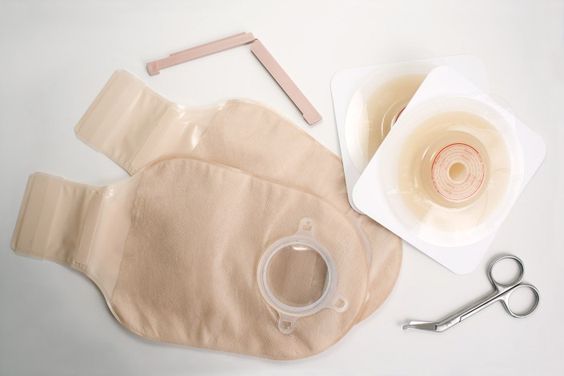There are many types of stoma size and shape. In order to prevent stoma complications, stoma patients need to evaluate the stoma shape after surgery to choose appropriate care products. This will not only reduce the occurrence of leakage, It can also improve the quality of life of people with stomas. Then it is necessary to understand the difference in options to determine the most suitable bag-making system.
Types of ostomy bags:
When performing stoma care, the choice of stoma bag should be based on the two types of stoma output, urine, and feces.
One is for urostomy, which requires the use of a drainable bag with a tap closure to ensure that when the tap is turned off, the urine can drain and prevent urine from pooling at the stoma and washing away the skin barrier. In fecal ostomy care, drainable or closed stool bags can be chosen. Drainable bags can be drained frequently throughout the day, while closed bags should be discarded and replaced with new ones. For people who only need to empty their pouch once or twice a day, a closed pouch may be more suitable.
One-piece and two-piece ostomy bags:
One-piece: convenient and simple to use, one-time use
Two-piece: including the chassis and bag, which can avoid damage to the stoma and surrounding skin, and only need to replace the stoma bag
Types of stoma trays:
Flat chassis: the stoma protrudes from the surface of the surrounding skin, and the skin around the stoma is free of folds, folds, and depressions.
Concave chassis: The stoma is offset from the center of the enterostomy or is flush with or lower than the peristomal skin surface, or the peristomal skin is concave.
Convex chassis: the stoma is concave and the surrounding skin and the convex chassis puts pressure on the skin around the stoma, so that the lowest mucous membrane of the stoma is higher than the skin, and prevents excrement from leaking to the skin around the stoma and causing complications.
Choice of different functions of ostomy bag:
Concealment: It is recommended to choose a one-piece ostomy bag. The one-piece ostomy bag is easy to put on or take off, the operation steps are simple, the material is soft, and it is easy to hide.
Flexibility: Different types of ostomy chassis and ostomy bags can be selected when traveling and exercising, so the two-piece ostomy product may be more convenient and more flexible to match.
Open pocket: When there is a lot of excrement that needs to be discharged at any time, it is best to choose an open pocket with a sealing clip or a special sealing design to facilitate quick emptying.
Transparent: If you need to observe your stoma and excrement every day, choose a transparent ostomy bag; if you don't want to see your stoma and excrement at all, choose a double-sided cloth pouch; you can add a window to observe the stoma and excrement. excrement.
When is it recommended to replace the ostomy bag clinically?
One-piece: replace once every 1~3 days, and the longest time is no more than 5 days.
Two-piece: replace the ostomy bag once every 1 to 3 days, and replace the ostomy chassis no more than 7 days each time.
Consideration of personal preference and proper fit can improve the quality of life of patients with stomas. Achieving an optimal fit is critical for people to return to normal function after surgery and remain active throughout their lives. Therefore, this information is important for anyone caring for a patient with an ostomy.
For more information on Innomed®ostomy pouch, Refer to the Previous Articles. If you have customized needs, you are welcome to contact us; You Wholeheartedly. At longterm medical, we transform this data by Innovating and Developing Products that Make Life Life easier for those who need loving care.
Editor: kiki Jia
Date: August 22, 2023

 English
English عربى
عربى Español
Español русский
русский 中文简体
中文简体








